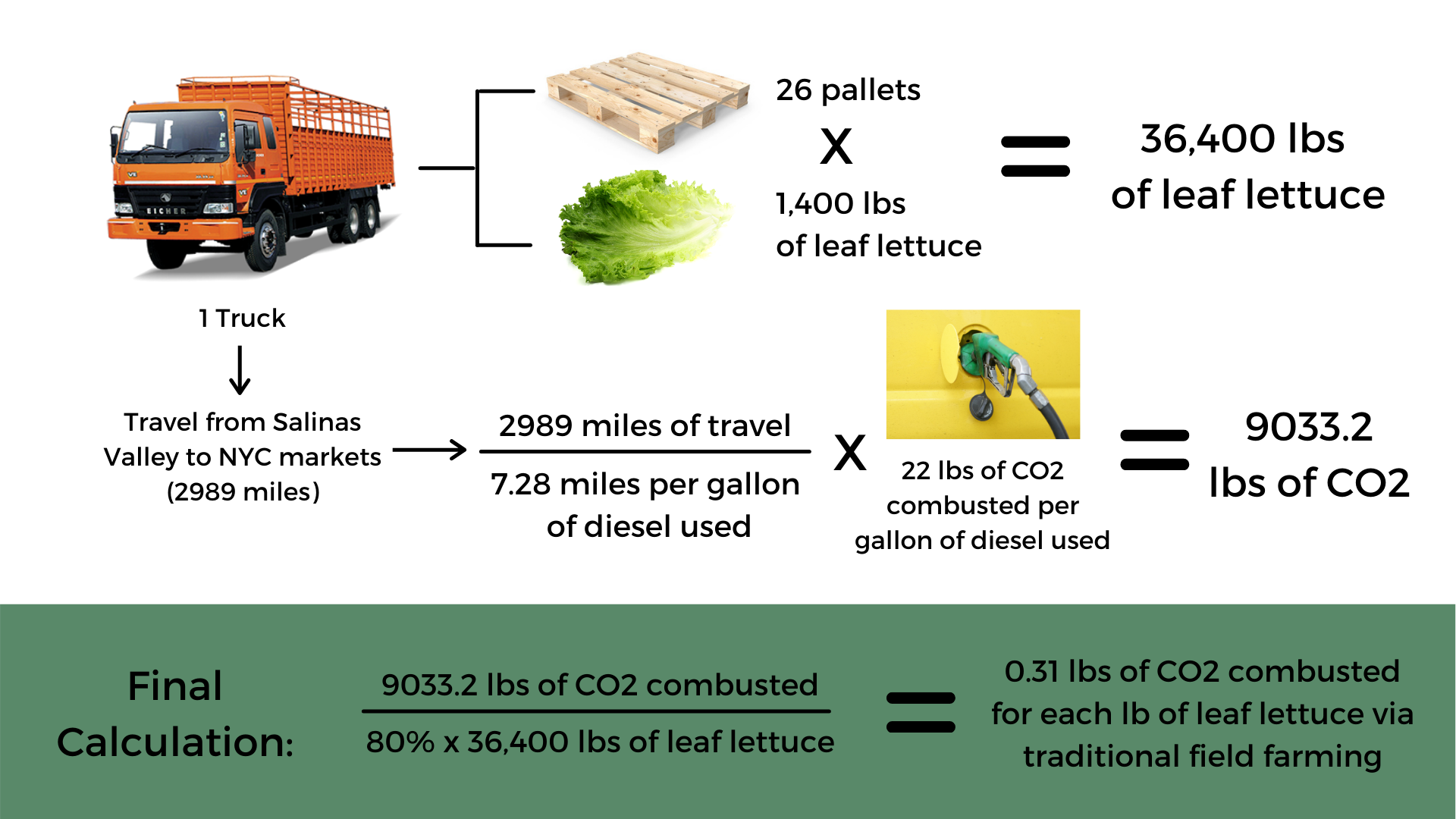Jan 20, 2021
How To Calculate Your Farm’s Carbon Footprint

Written By: Djavid Amidi-Abraham
This is the first of a two-part series on how vertical farming compares to other farming methods, from our Director of Consulting, Djavid Amidi-Abraham.
As a leading technical consultant at Agritecture, I am often asked questions about vertical farms (VFs). The most popular are:
"What can you grow in a vertical farm?”
“How much can you produce and at what price?”
“Where do vertical farms make the most sense?”
These are the types of questions clients, industry associates, and our online followers from around the world frequently ask us.
While these inquiries are important, the one question I wish I was asked more is, "Are vertical farms the best way to grow our food?”
The answer to this question is extremely complicated and here’s why…

While vertical farms (VFs) can insulate agriculture from the mounting effects of climate change, reduce food miles, and flatline production costs, they come with their own set of challenges. The extremely high costs of implementation aside, VFs have high carbon footprints. In many cases, VF production methods contribute more to greenhouse gas (GHG) emissions than products grown in the field and shipped long distances to market. Whilst physically more resilient to climate change, the high energy use of VFs still produce GHGs that contribute to warming the climate, assuming they are tied to the grid.
Let’s look at a container farm system, a system type chosen by many urban vertical farmers due to their small size and high production capacity per unit footprint.
A leading containerized systems provider’s product uses approximately 130 kWh of power per day, the carbon equivalent of 117 lbs of CO2 at the New York grid rate of 0.9 lbs of CO2 per kWh of power generated and used. At a generous yield rate of 100 lbs per week, this container farm has produced 8.19 lbs of CO2 for every lb of leafy greens it grows.

Now, let’s look at the carbon footprint of food transport.
Over 95% of the lettuce consumed in US markets is grown in California and Arizona. A long-haul freight truck gets about 7.28 miles to the gallon and each gallon of diesel burned produces 22 lbs of carbon dioxide when combusted. These trucks are capable of carrying 26 pallets and each pallet will weigh about 1,400 lbs each when packed with leaf lettuce.
This grand total weight of 36,400 lbs is moved 2,989 miles from the Salinas Valley to serve the insatiable demand of NYC markets for fresh salads year-round. During this journey, 9,033.2 lbs of CO2 are emitted getting this lettuce to market. If we break this down to CO2 per lb of product, we see about 0.31 lbs of CO2 emitted per lb of produce, discounting roughly 20% of the total weight because of the weight of pallets, packaging, and transport wastage.
This 0.31 lbs of CO2 is not bad considering this product was grown outdoors and incurred no cost or carbon footprint relating to the need to illuminate the grow area or cool and dehumidify the space. At 0.31 lbs of CO2 per lb of product shipped to market, this carbon footprint pales in comparison to that of the containerized system, a whopping 8.19 lbs of CO2 per lb of product grown.
.png)
This isn’t to say that vertical farms don’t have other benefits in regards to overall sustainability. For one, they use far less water than outdoor farms, many touting up to 99% water savings compared to traditional farms. While this may be the case, removing the water from the transpiration-laden air of a vertical farm is a costly endeavor, requiring power-intensive dehumidification systems. So, yes, less water is used in the process, but at an added cost that likely exceeds the cost of the water itself.
Besides water, another input that is wasted in traditional methods of production is fertilizer.
This point is often touted as a strong advantage that vertical farms have over field production. In a vertical farm, almost all of the input nutrients are used in the growing process and very little is wasted. In contrast, fields become oversaturated with excess nutrients that run into local waterways or tailwater collection ponds. This is a major advantage of recirculating hydroponic systems and can exist in vertical farms. This remains a problem for field production, however, as farmers tend to over-fertilize their fields as an affordable insurance policy.
This is all to say that vertical farming isn’t the one-stop solution for every farmer, business, or city. Here at Agritecture, our working philosophy is that “No One Size Fits All”. Nor is any one solution in urban agriculture the best. The most fitting urban farming solution truly depends on the city, the culture, and the people involved.
Need help choosing the best urban farming strategy for your needs? Try Agritecture Designer, the world’s first digital platform to accelerate urban farming entrepreneurs around the world, or use our ASK AGR service to get into contact with one of our leading consultants!
About The Author
Djavid oversees project development and helps clients determine the right growing method, crop choice, and labor-management methods. He has a professional background in sustainable technologies including hydroponic equipment distribution, vertical axis wind turbine sales, and carbon sequestration applications.
Expertise: farm design, equipment & technology, feasibility studies


